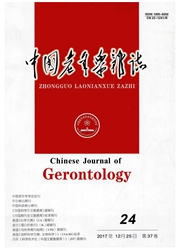

 中文摘要:
中文摘要:
目的:探索不同浓度原儿茶酸( PCA )对脂多糖( LPS )诱导的急性肺损伤( ALI )小鼠的保护作用,并探讨其对TLR4信号通路的作用。方法将60只小鼠分为6组:正常对照组、LPS模型组、PCA高剂量组、PCA中剂量组、PCA低剂量组、地塞米松阳性对照组。模型组以5mg· kg -1 LPS腹腔内注射诱导ALI。观察小鼠肺组织病理学变化;用BCA法检测肺泡灌洗液中总蛋白浓度;用ELISA检测肺泡灌洗液及血清中炎症因子TNF-α,IL-1β的表达,Western Blot 检测肺组织中TLR4蛋白的表达水平。结果与模型组相比,PCA治疗组肺组织损伤程度显著减轻,且与PCA给药浓度有关,高浓度组减轻显著;BALF及血清中TNF-α,IL-1β含量出现明显下降, PCA高剂量组差异显著( P<0.05);BALF中蛋白浓度与模型组相比出现明显下降,PCA高剂量组差异显著( P<0.01);TLR4蛋白表达量较LPS模型组相比显著降低(P<0.01),并随浓度的增高而降低。结论 PCA对脂多糖所致急性肺损伤的保护作用与浓度有关,高浓度组作用显著,其作用机制可能与其抑制TLR4信号通路有关。
 英文摘要:
英文摘要:
Objective To explore the protective effects of different concentrations of PCA on LPS-induced acute lung injury in mice,and to explore the role of TLR4 signaling pathway in ALI.Methods Sixty mice were divided into six groups:the normal group,the model group,high dose of PCA group,middle dose of PCA group,small dose of PCA group,dexamethasone group.The model group was in-duced by intraperitoneal injection of LPS with dose of 5mg/kg.Histopathological changes were observed in lung;Total protein concentration in bronchoalveolar lavage fluid was tested by BCA assay;Expression of Inflammatory cytokines TNF-αand IL-1βin bronchoalveolar lavage fluid and serum were detected by ELISA;Expression level of TLR 4 protein in lung tissue was detected by Western Blot .Results Compared with the model group ,different concentration of PCA treatment group was significantly reduced in lung injury degree ,especially in the high dose of PCA group;TNF-αand IL-1βlevels in BALF and serum marked decline in PCA groups ,and High dose groups were significantly;protein con-centration in BALF was marked decline compared with model group ,and high dose groups were significantly as well;expression of TLR4 pro-tein which was pretreated with PCA was significantly lower compared to LPS group ,and the content was decreased with increased PCA con-centration.Conclusion Protective effect of PCA on LPS-induced acute lung injury is concentration dependent and the high dose of PCA group has a significant effect to protect the lung from injury ,and the mechanism may be related to inhibition of TLR 4 signaling pathway .
 同期刊论文项目
同期刊论文项目
 同项目期刊论文
同项目期刊论文
 A comparison study on microwave-assisted extraction of catalpol from rehmannia glutinosa libosch wit
A comparison study on microwave-assisted extraction of catalpol from rehmannia glutinosa libosch wit 期刊信息
期刊信息
